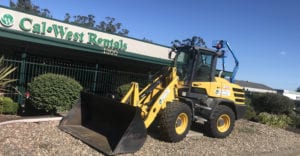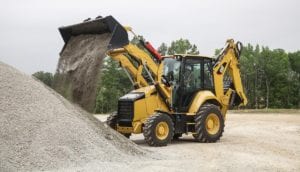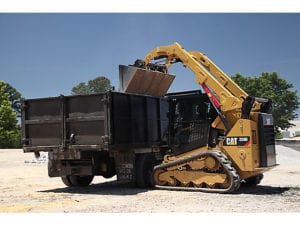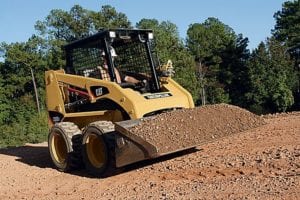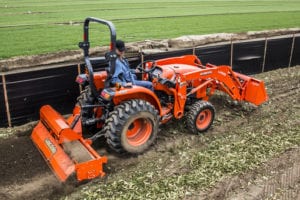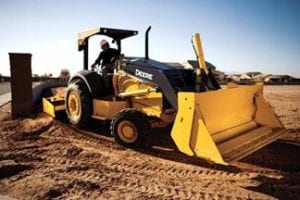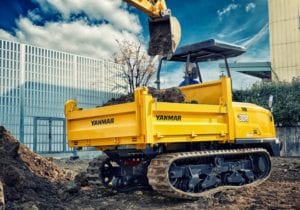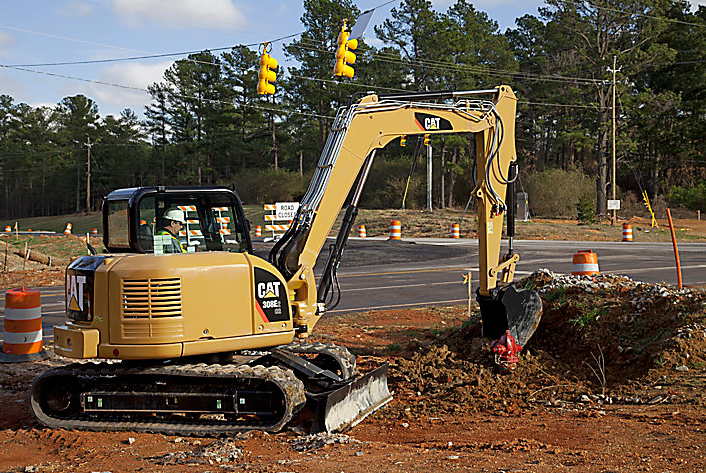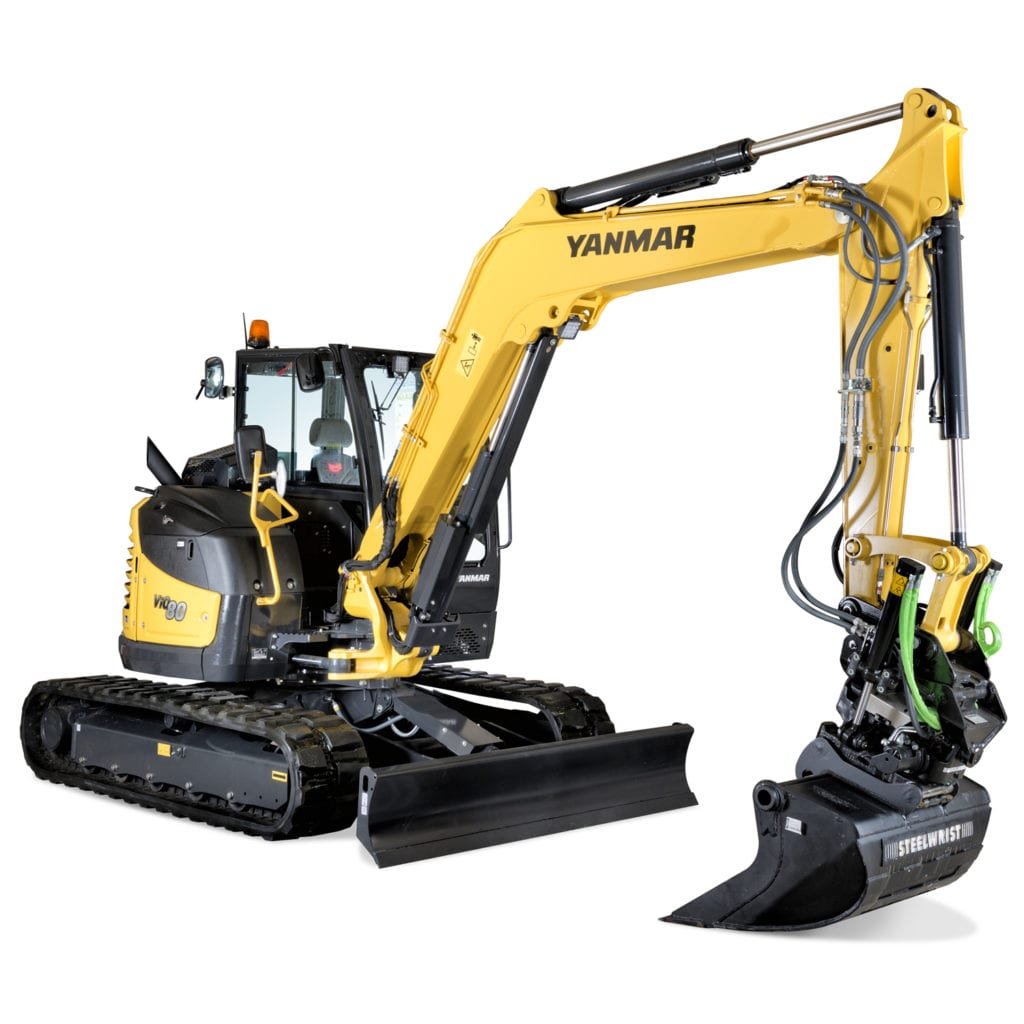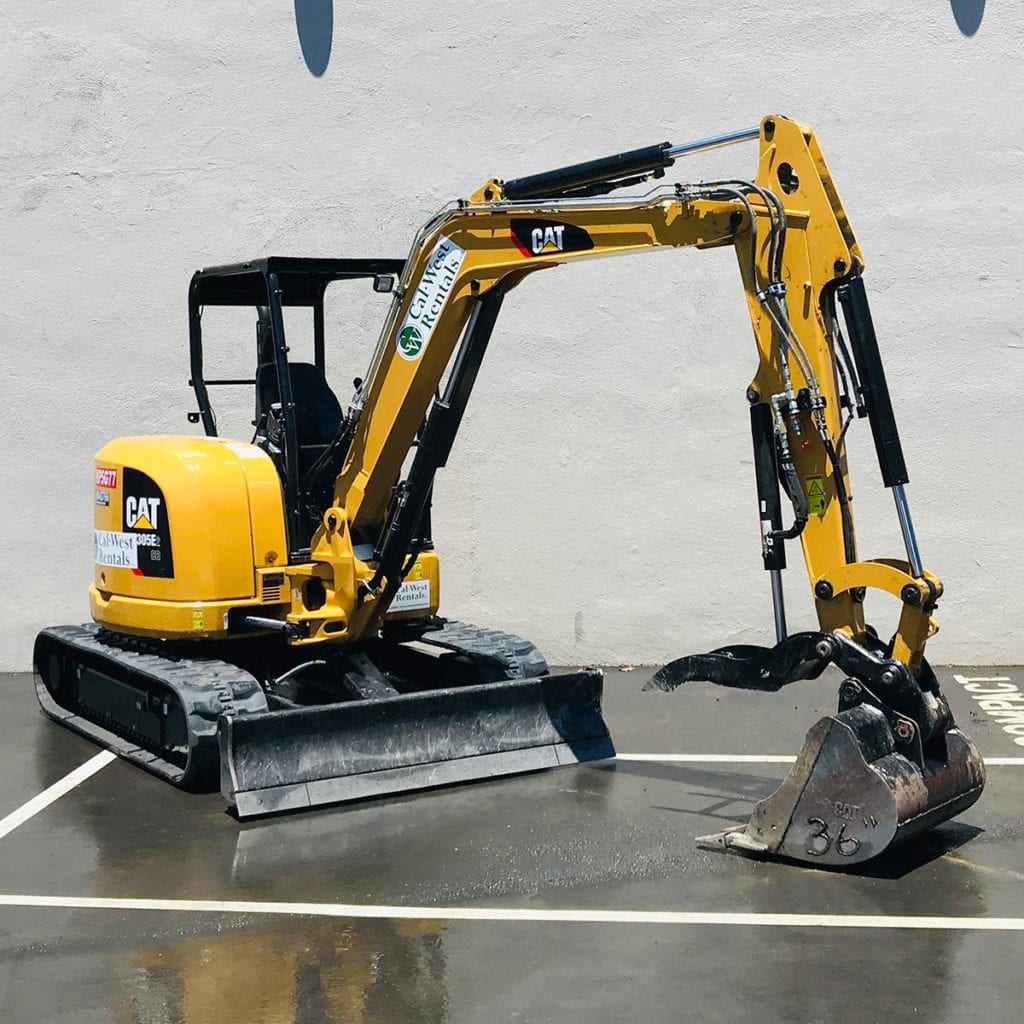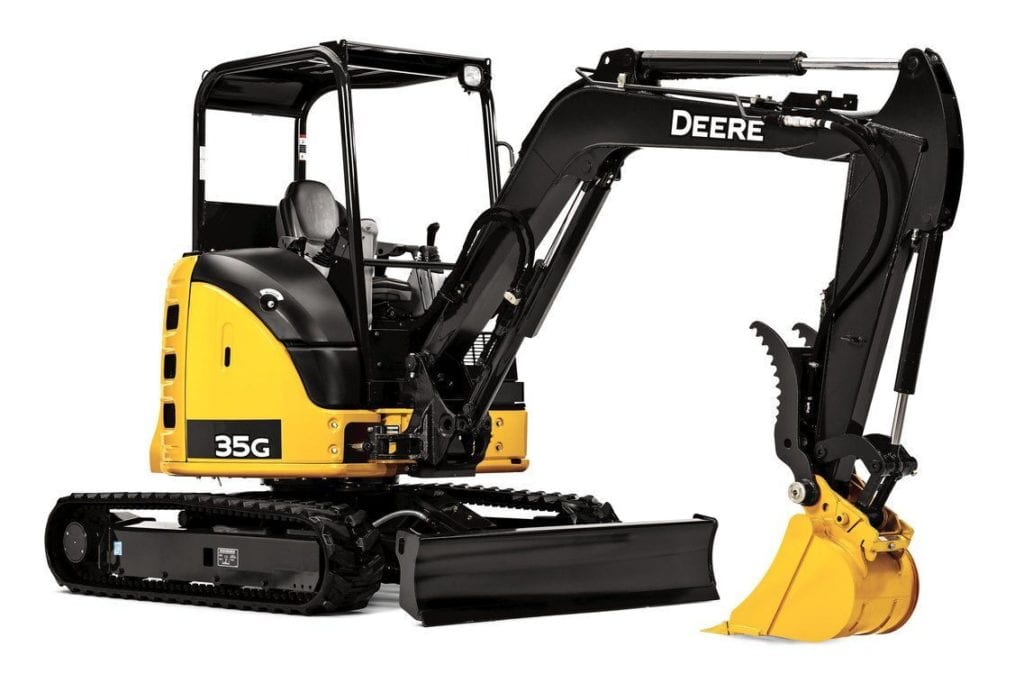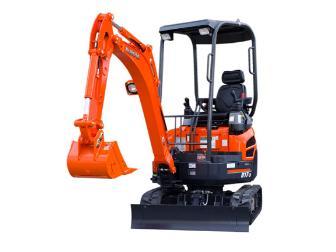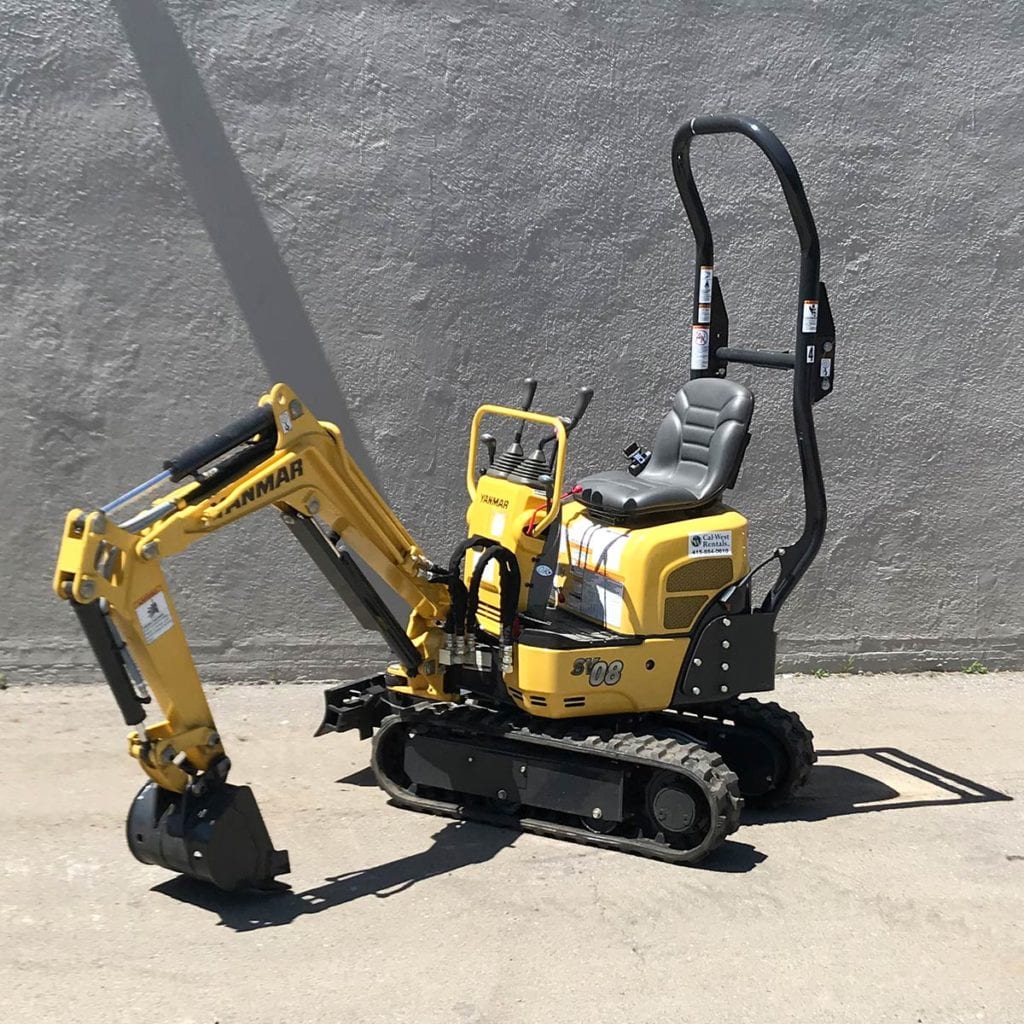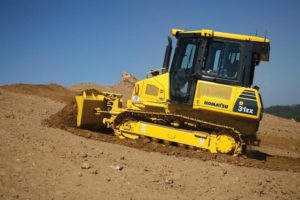
As for heavy equipment, earth mover rentals hold a special place in the heart of many a roughneck. If you conducted a poll a Tonka bulldozer would probably rank in the top 3 most gifted toys for five-year-olds. They are often referred to in general as: heavy vehicles, heavy construction equipment, heavy trucks or vehicles, and engineering equipment. A unifying characteristic for all earth movers is that most of them use hydraulic drives to power movement.
Earth moving equipment is usually rented for moving large masses of, you guessed it, earth and used for a wide range of duties including landscaping jobs, laying foundations, light and heavy demolition, rock and dirt excavation, as well as trench digging.
A seasoned hardhat will tell you there are many types of earth movers to rent and matching the right one for the job is key to a smooth project. Earth movers are broken down into 3 classes: tractor & loader rentals, excavator rentals, and dozer rentals; however, each has there own subset of machines. Let’s dig a little deeper (pardon the pun) to understand where they differ and which of these heavy equipment rentals is right for your next job.
Tractors & Loaders
Tractors & Loaders are great for working with loose materials. Think of them as a giant ladle scooping up a bowl of stew, which unlike dense soil, is loose (this analogy will help us later in the article). They are a form of tractor and for the most part wheeled, hence the name wheeled loaders. Whether it’s snow, sand or gravel a loader can have it transported to most anywhere on-site in a matter of minutes. Loaders also shine at clearing rubble and loading and transporting materials onto trucks. Their accurate and precise material handling capabilities make loading jobs more efficient and easier.
One subset of this category is the skid steer which is sort of a mini-loader. They are the swiss army knife of earth mover rentals because of the myriad of interchangeable attachments available to rent. Each attachment plays a different role. They include but are not limited to: mower for skid steer, tiller, auger attachment, hydro hammer breaker attachment, and skid steer for planer. If you’ve ever wondered where the name “skid steer” originated you’ve come to the right place. It derives from the unique manner in which it steers as there is no steering mechanism. The wheels stay straight and do not move left or right relative to the cab. It is similar to the manner in which a military tank turns. With the option of wheels or tracks you find the right skid-steer rental at our Petaluma or San Rafael location. By powering the left and right wheels or tracks at different speeds it can control the direction by dragging and skidding its wheels across the ground.
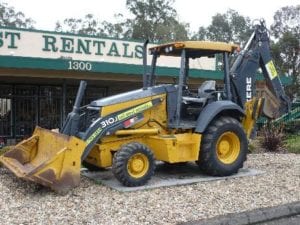
Another smaller heavy equipment loader is the versatile backhoe loader. You can rent a backhoe loader for digging, rock breaking, light moving, and demolition. So what’s the difference between a skid steer and a backhoe loader you ask? First, a backhoe loader can turn its wheels. Second, a backhoe loader can be fitted with two attachments simultaneously (front and back). On the other hand, a skid steer is limited to one attachment at a time on the front of the loader.
Excavators
Excavators are rented for digging. You are more likely to see them on larger, commercial jobs for they are bigger and have more muscle than your traditional loader. However, our mid-sized compact excavator rentals also come in handy for all types of commercial and residential construction situations. Remember we used the analogy of scooping stew out of a pot with a ladle when describing the large open buckets on backhoes and loaders? Now think of scooping your favorite ice cream from a carton. A soup ladle wouldn’t do the trick. It would break or buckle because of the density of the material. Instead, a compact rigid scoop that can dig out the ice cream would serve a better purpose. The keyword here is dig. So where does all this muscle come from needed for this heavy scooping? Robust hydraulics and size. The average backhoe (which we’ve learned falls within the “loader” category) weighs around 18,000 lbs whereas excavators can range in weight from 3,600 lbs to 205,000 lbs. The largest excavator we have in our rental inventory is our mid-sized excavator the Cat® 308E which weighs in at 18,500lbs. The extra oomph provided by excavators can come in handy in a myriad of ways on a project site but they especially work well for trenching, foundations, mining and river dredging. Compared to a backhoe, a big difference with an excavator is its rotation flexibility. The cab on an excavator sits atop the undercarriage and can rotate a full 360 degrees. Generally, a loader’s pivot potential maxes out at about 200 degrees. Pivoting and turning on excavators are quicker and more precise due to their hydraulic systems, which are controlled by a joystick.
Dozers
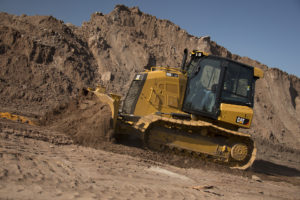
Now for the meanest, heaviest hog of the bunch – the dozer. It looks like a stout tractor with a big blade on the front and excels at moving large quantities of soil, sand or rubble over wide parcels of land. There are two main types: crawler dozers and wheeled bulldozers. The latter sometimes referred to as a tire bulldozer, is larger and offers better maneuverability and overall handling. To provide mobility and prevent these behemoths from sinking in the mud, crawler dozers are outfitted with huge, extra-wide tracks, sometimes called “swamp tracks”, that stabilize and distribute its weight evenly. Our tracked dozer rentals come in two different sizes: a 75hp 15,720lb dozer with an 8’ blade and a 104hp 20,300lb dozer with a 9’ blade. An interesting feature for the dozer is the blade’s ability to rotate at different angles which helps in controlling the distribution of dirt on grading projects. Need to protect your new football field from future drainage nightmares? By manipulating its blade positioning a dozer can easily build a crown on your field using a 2% slope. On the backside of a dozer, you’ll usually find a long claw type apparatus called the ripper. It breaks large blocks of clay or rock into smaller, more manageable pieces. The ripper will have multiple or a single shank(s) that has a replaceable tungsten alloy tip (sometimes called a “boot”). For tough ripping jobs, the single shank version is usually preferred.
You should now be able to hold your own when the topic of earth movers comes up at your next cocktail party, but what if you have a big construction project looming and need to learn more? Call Cal West Rentals. We love this stuff and would be more than happy to help you with your heavy equipment decision-making.
Contact a Rental Consultant Today
To rent earth moving equipment please call us today.
Petaluma 707 – 763 – 5665 or San Rafael 415 – 884 – 0610

